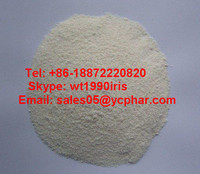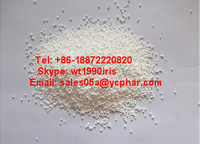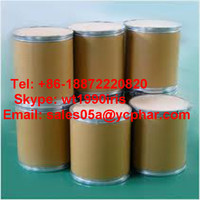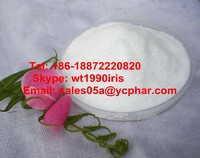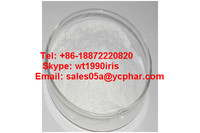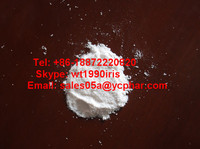Ivermectin CAS 70288-86-7/ sales05a@ycphar.com(OAP-018)
Product Quick Detail
- Skype
- wt1990iris
- Steroids
- http://cnrdn.com/WuUE
- For Any Further Information
- sales05a AT ycphar DOT com
- Packaging
- negotiable
- Delivery
- 4 Days
Specifications
For any further information
sales05a AT ycphar DOT com
Skype: wt1990iris
Hormone Powder Link: http://cnrdn.com/WuUE
Ivermectin
Product Name: Ivermectin
Synonyms:
CARDOMEC
EQVALEN
heartgard-30
IVERMECTIN
IVERMECTINE
IVOMEC
hyvermectin
IVERMECTIN HCL
Ivosint;;
Ivermectin CAS No.: 70288-86-7
Ivermectin EINECS No.: 274-536-0
Ivermectin Molecular formula: C48H74O14
Ivermectin Molecular weight: 875.09
Ivermectin Appearance: white crystalline powder
Description
The product is an antibiotic agent, which is active against nematodes, insects and mites. Injection and tablet made from the product are active against gastrointestinal nematodes, hyproderma bovis, hyproderma lineatum, sheep nose bot, psoroptes ovis, sarcoptes scabiei var suis, sarcoptes ovis and the like, In addition, it is indicated for the treatment of endoparasites (nematodes such as rondworms and lungworms). The product may be formulated as an insecticide and miticide used in agriculture, which is efficacious against mites, diamondback worm, common cabbage worm, leafminers, psylla, nematodes and the like. Its main characteristics are as follows: it is efficacious against endo- and ecto-parasites only used once.
Application
1) Helminth
It is traditionally used against worms. It is mainly used
in humans in the treatment of onchocerciasis, but is also effective against other worm infestations (such as strongyloidiasis, ascariasis, trichuriasis, filariasis, enterobiasis and some epidermal
parasitic skin diseases (EPSDs), including scabies. Ivermectin, under the brand name Mectizan, is currently being used to help eliminate river blindness (onchocerciasis) in the Americas, and to
stop transmission of lymphatic filariasis and onchocerciasis around the world. Currently, large amounts of ivermectin are donated by Merck to fight river blindness in countries unable to afford the
drug. The disease is endemic in 30 African countries, six Latin American countries, and Yemen, according to studies conducted by the World Health Organization. The drug rapidly kills microfilariae,
but not the adult worms. A single oral dose of ivermectin, taken annually for the 10-15 year life span of the adult worms, is all that is needed to protect the individual from
onchocerciasis.
2) Arthropod
More recent evidence supports its off-label use against arthropods: Mites such as scabies. It is usually limited to cases that prove resistant to topical treatments and/or which present
in an advanced state (such as Norwegian scabies). Ivermectin lotion (0.5%) is FDA approved for patients 6 months of age and older.
3) Veterinary use
Ivermectin is also used in veterinary medicine. It
is sometimes administered in combination with other medications to treat a broad spectrum of animal parasites. Some dog breeds (especially the Rough Collie, the Smooth Collie, the Shetland Sheepdog
and the Australian Shepherd), though, have a high incidence of a certain mutation within the MDR1 gene; affected animals are particularly sensitive to the toxic effects of ivermectin. [14] Clinical
evidence suggests that kittens are susceptible to ivermectin toxicity.[15] A 0.01% ivermectin topical preparation for treating ear mites in cats (Acarexx) is available. It is sometimes used as an
acaricide in reptiles, both by injection and as a diluted spray. While this works well in some cases, care
must be taken, as several species of reptile are very sensitive to ivermectin. Use in turtles is particularly contraindicated.
For any further information
sales05a AT ycphar DOT com
Skype: wt1990iris
Hormone Powder Link: http://cnrdn.com/WuUE
- Country: China (Mainland)
- Business Type: Manufacturer
- Market:Asia,Europe,Americas,Oceania
- Founded Year:2001
- Address:
- Contact:Iris Wu

